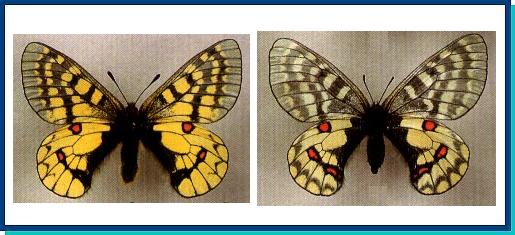LEPIDOPTERA
PAPILIONIDAE Latreille,1802
PARNASSIUS Latreille,1804
Parnassius eversmanni [Menetries] in Siemaschko, [1850]

Parnassius eversmanni eversmanni [Menetries] in Siemaschko, [1850]
· RANGE. From the Altai across the whole of Siberia and the Far East to Japan and to N. American tundras.
· DISTRIBUTION AND VARIATION. The species range covers the vast areas of Siberia and the Far East in scattered populations forming a number of closely related subspecies. The nominate subspecies flies in the mountains of S. Siberia. The ssp. vosnessenskii [Menetries] in Siemaschko, [1850] has been described from the coasts of the Sea of Okhotsk, with magadana D. Weiss, 1971, restricted to the Northeast of Asia, probably referred to the same subspecies. In polar WE. Yakutia and in the Chukot Region, the ssp. polarius Schulte, 1991 occurs which is close to the N. American ssp. thor H. Edwards, 1869. The form innae Kotshubei, 1929, described from the Bureinsky Mts. in the Amur region, is sympatric with P. felderi in the Lesser Khingan Mts. A lot of infrasubspeciflc forms have been described within all above taxa.
· HABITATS AND BIOLOGY. In S. Siberia, it flies in alpine meadows and mountain tundras up to 2,700 m a.s.l.; in NE. Yakutia, it occurs in swampy sparse larch forests, along streams, etc., and also on stony slopes up to the tundra belt (1,500 m a.s.l.). Flight period: June-July. Host plants: Corydalis arctics,, C. paeomipholia, C. gorodkovi, C. pauciflora, etc. Hibernation twice, first as newly-hatched larvae in the chorion and then as pupae.
Photo and text: Guide to the BUTTERFLIES OF RUSSIA and adjacent territories Volume 1. PENSOFT, Sofia - Moscow. 1997